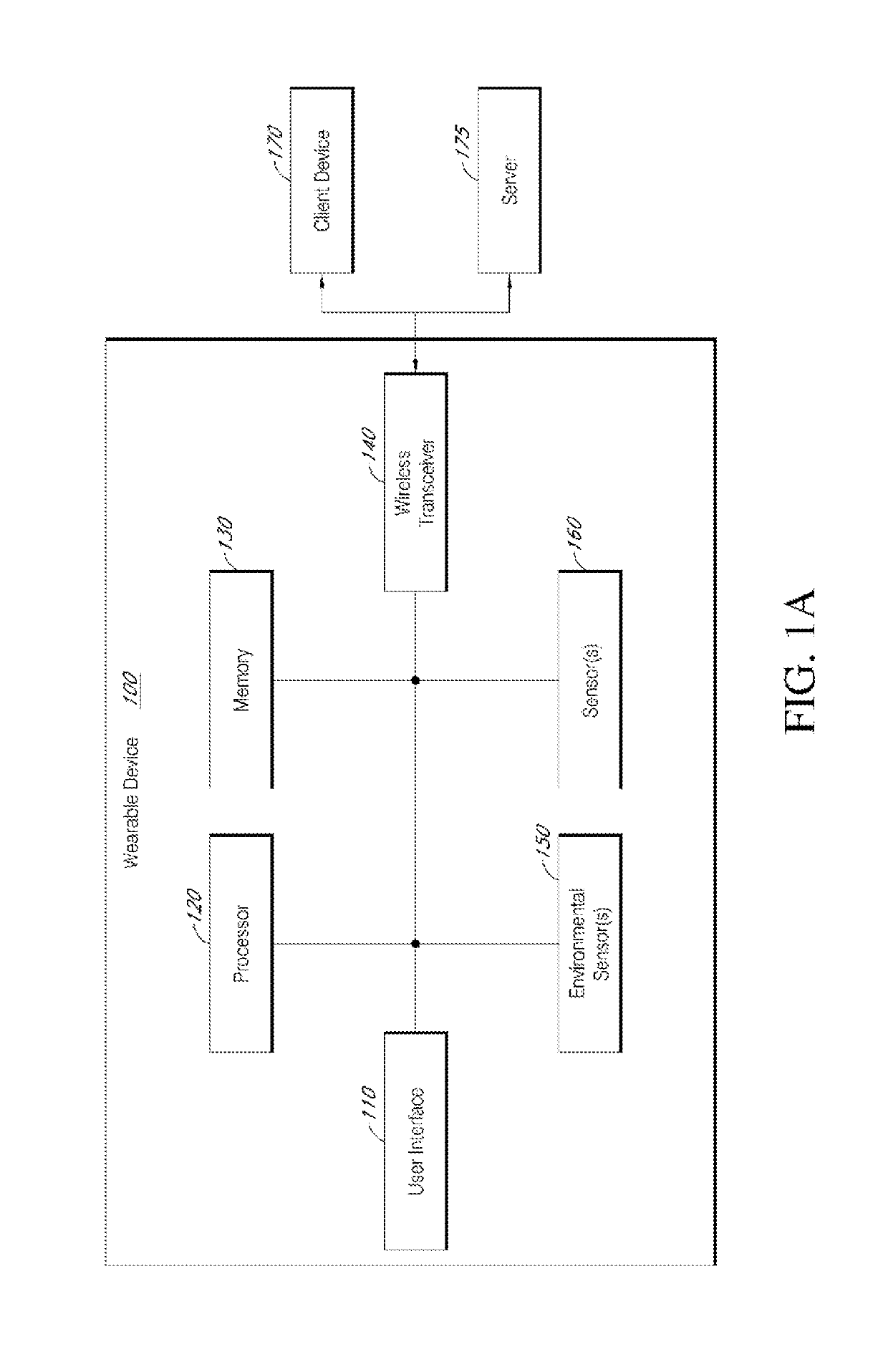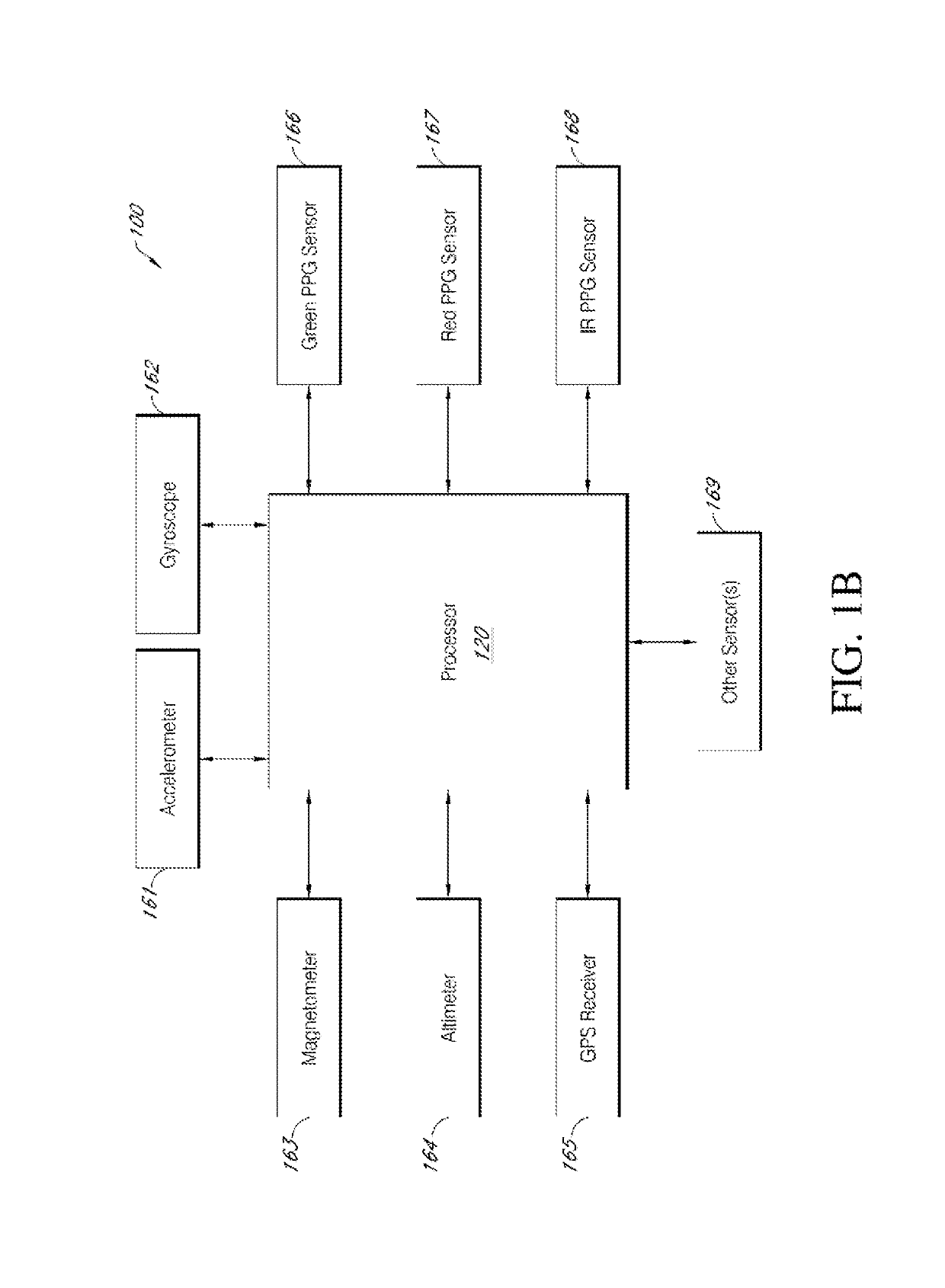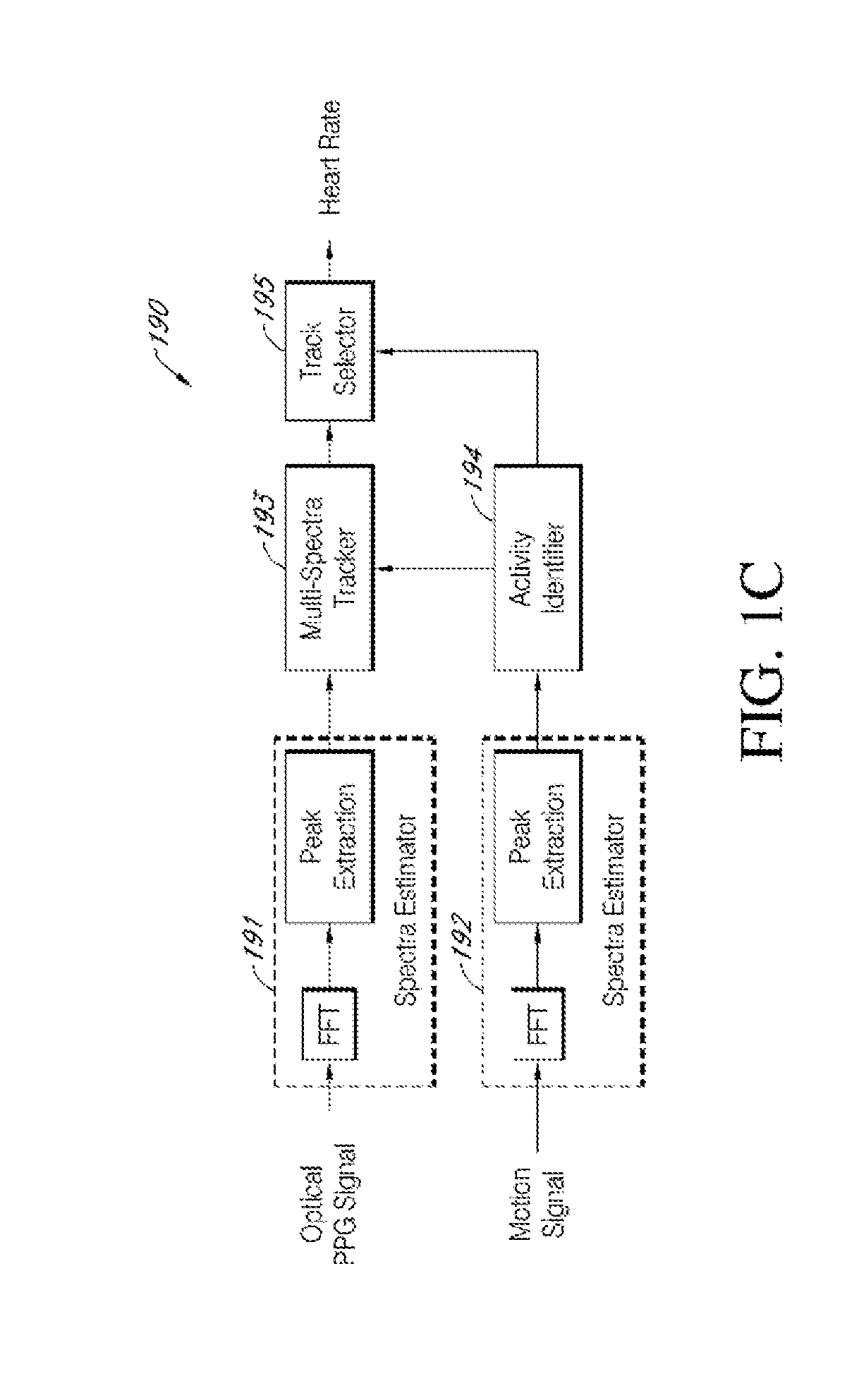Automated detection of breathing disturbances
a technology of automatic detection and breathing disturbance, which is applied in the field of wearable devices, can solve the problems of limiting the ability of these devices to run complex computations or perform complex operations, and difficulty in obtaining accurate determinations of user's activities
- Summary
- Abstract
- Description
- Claims
- Application Information
AI Technical Summary
Benefits of technology
Problems solved by technology
Method used
Image
Examples
Embodiment Construction
[0023]Approaches in accordance with various embodiments can obtain and analyze health-related information for a user wearing, or otherwise utilizing, a device such as a wearable tracking device. A tracking device in some embodiments can include one or more sensors for tracking of an activity performed by a user of a wearable device. Some example wearable devices may be referred to as wearable activity trackers or wearable activity tracking devices. Various algorithms or techniques for tracking activities have been developed, and these algorithms may be specialized based on the type of activity performed by the user. For example, the user may wear the wearable device all day, and for each activity performed by the user throughout the day and night, a specialized algorithm may generate and present relevant activity metrics to the user. For example, the wearable device may collect sensor data from one or more sensors provided on the wearable device while the user is sleeping, and gener...
PUM
 Login to View More
Login to View More Abstract
Description
Claims
Application Information
 Login to View More
Login to View More - R&D
- Intellectual Property
- Life Sciences
- Materials
- Tech Scout
- Unparalleled Data Quality
- Higher Quality Content
- 60% Fewer Hallucinations
Browse by: Latest US Patents, China's latest patents, Technical Efficacy Thesaurus, Application Domain, Technology Topic, Popular Technical Reports.
© 2025 PatSnap. All rights reserved.Legal|Privacy policy|Modern Slavery Act Transparency Statement|Sitemap|About US| Contact US: help@patsnap.com



